Description
betula pendula
European weeping Birch, which has a silver bark
Packet of 200 seeds
betula pendula
European weeping Birch, which has a silver bark
Packet of 200 seeds
| Weight | .06 lbs |
|---|

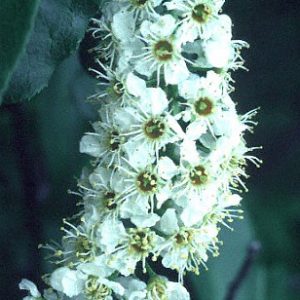
Prunus virginiana var. Schubert
A shrub or small tree; Usually grown as a tree. Height usually not over 20 to 25 feet. Trunk diameter 4 to 8 inches. The inner bark has bitter cherry flavor and aroma. Covered in blooms during Spring.
This strain has a purplish foliage for most of the summer and fall. Leaves emerge as bright green in the spring, changing to a deep, deep reddish purple. Dense, pyramidal to oval shape, and grayish bark.
Fruit is borne in dense clusters; first reddish, then turning nearly black when fully ripe. The skin of fruit thick; flesh thin and dark; very astringent to the taste, but edible. Used in the making of jams, jellies, and some very good tasting wine.
Popular tree for birds. Chokecherry is the most widely distributed tree in North America, extending from the Arctic Circle to Mexico and from the Atlantic to the Rockies.
Very hardy. Zones 2-9
Very adaptable. Tolerates poor dry soils. Full sun to partial shade
Packet of 15-20 seeds
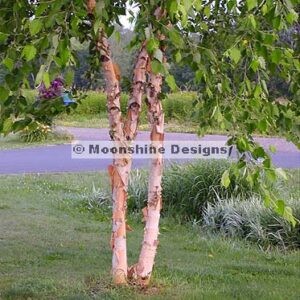
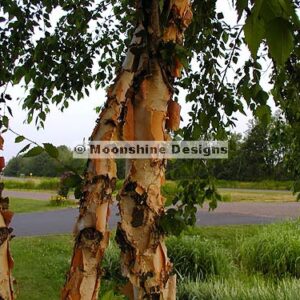
Betula nigra
Best adapted to cooler climates as it does poorly in high summer heat, especially root zone heat!
Prefers well-drained, slightly acid sandy loam soils
Full sun.
Avoid spring pruning to prevent bleeding.
When planting to the landscape, do NOT set the tree deeper than it was growing in the container or the upper roots will grow around the trunk at the base and kill it.
Packet of 200 seeds
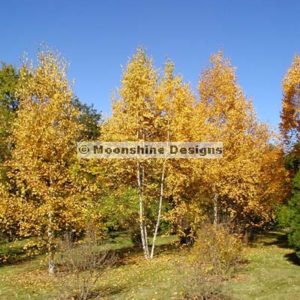
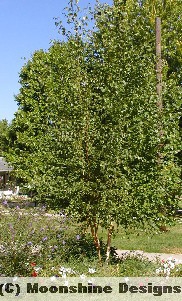
Betula Papyrifera
The Birch family is noted for its fall leaf color, and white peeling bark. They also grow fairly quickly! These are the trees that were used by the Indians for making canoes
Zones 2 – 7. Will do poorly south of zone 7.
Naturally grows in clumps, so plant three or four together.
Grows 40 – 80+ feet, depending on location, and prefers cool, damp areas, that are well drained.
Best adapted to cooler climates as it does poorly in high summer heat, especially root zone heat!
Prefers well-drained, slightly acid sandy loam soils
Full sun.
Avoid spring pruning to prevent bleeding.
When planting to the landscape, do NOT set the tree deeper than it was growing in the container or the upper roots will grow around the trunk at the base and kill it.
Packet of 200 seeds
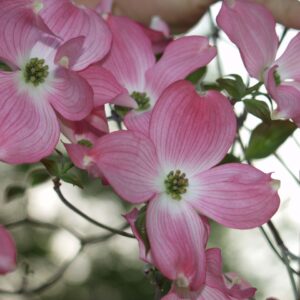
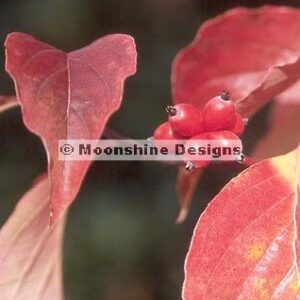
The flowering dogwood is unquestionably one of the most popular of our native flowering trees.
Height to 30 feet, with a rounded, open, horizontal branching habit. Moderate growth. The branches are covered with spectacular pink to red bracts of flowers in Spring before leaves appear.
Fall fruits are glossy, red, and persist well into late fall. Foliage turns a bright scarlet in fall.
Excellent used as specimens, masses or naturalized under large trees. Prefers deep, moist but well-drained soil. Avoid deep planting and a hot, dry exposure. Not reliably hardy Zone 4a.
Zones 4b-8
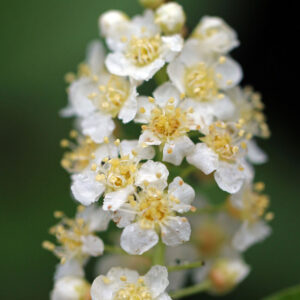
Prunus virginiana
A shrub or small tree; height usually not over 20 to 25 feet, diameter 4 to 8 inches; with a rounded crown. The inner bark has bitter cherry
flavor and aroma. Covered in blooms during Spring.
Fruit is borne in dense clusters; first reddish, then turning nearly black when fully ripe. The skin of fruit thick; flesh thin and dark; very astringent to the taste, but edible. Used in the making of jams, jellies, and some very good tasting wine.
Popular tree for birds. Most widely distributed tree in North America, extending from the Arctic Circle to Mexico and from the Atlantic to the Rockies.
Very hardy. Zones 2-9
Packet of 15-20 seeds
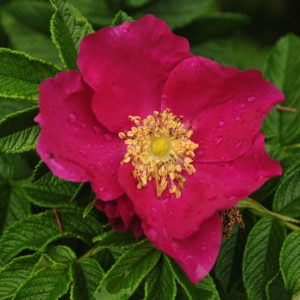

Ah, yes……….. the perfection of a rose in mid-summer. The sweet fragrance emitted from perfectly formed petals is why this is the flower of choice for many.
But, to obtain the perfect rose one needs to have the perfect soil, a perfect watering regimen, and a lot of time. For those of you who don’t fall into this category, consider the species Rosa rugosa. It is not as neat and upright the hybrid teas, and the flower petals tend to go helter-skelter. It sometimes has a kind of shaggy, unkempt look about it. That’s what gives this plant its character. Named for the wrinkled (rugose) surface of its glossy green leaves, this rose is a charmer that can soften and naturalize any area.
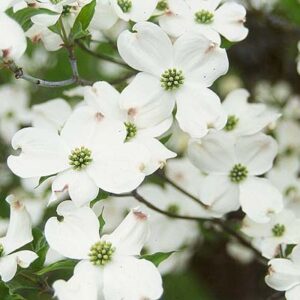

The flowering dogwood is unquestionably one of the most popular of our native flowering trees.
Height to 30 feet, with a rounded, open, horizontal branching habit. Moderate growth. The branches are covered with spectacular white bracts of flowers in Spring before leaves appear.
Fall fruits are glossy, red, and persist well into late fall. Foliage turns a bright scarlet in fall.
Excellent used as specimens, masses or naturalized under large trees. Prefers deep, moist but well-drained soil. Avoid deep planting and a hot, dry exposure. Not reliably hardy Zone 4a.
Zones 4b-8
NOTE: JUNE-MID SEPTEMBER SHIPMENTS BY GROUND ARE AT BUYER'S RISK. Please choose quicker method. Dismiss
